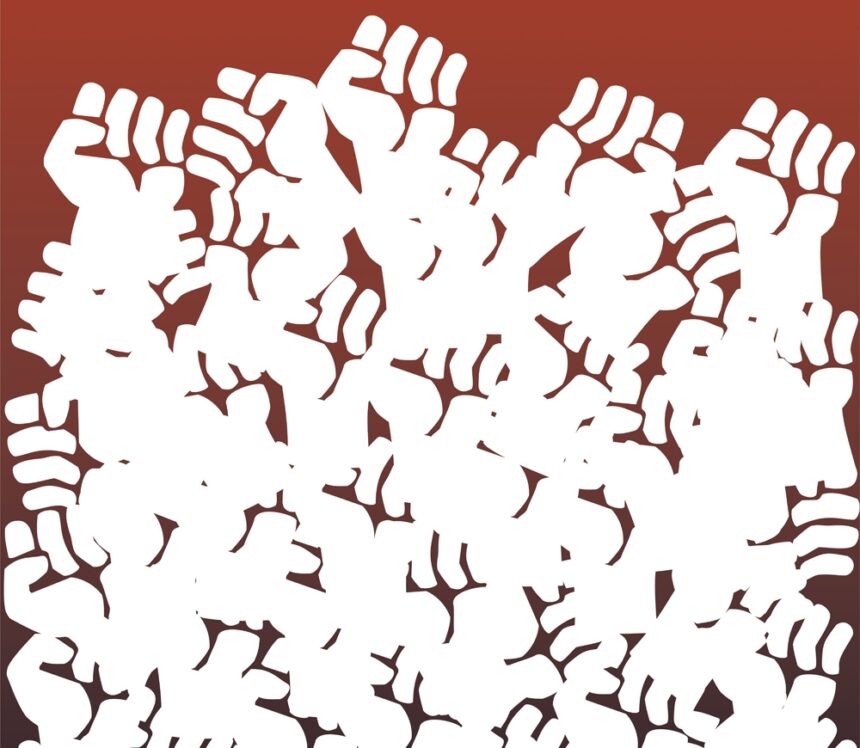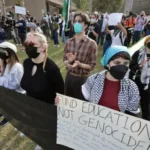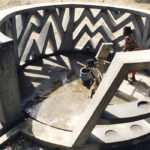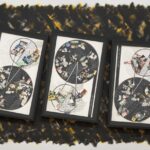SITAC XII
Just Art / Arte Justamente: State of Exception
Mariana Botey
Translated by Sara Solaimani
Introduction by Sara Solaimani
When Mariana Botey delivered her paper State of Exception at Just Art/Arte Justamente, the twelfth International Symposium on Contemporary Art Theory (SITAC), she spoke directly from the gap between art and justice that the panel’s title left open to question. The misunderstanding that art is inherently a space of justice is an important problem for Botey; SITAC XII provided an opportunity to open a critical discourse around it. The scholar has devoted her life’s work to actively grounding and locating art practice, history, theory, and criticism as zones of disturbance that mirror the political struggle of the people against the injustices of the State. Her central argument is that art has no significant claim to justice otherwise. Botey stresses that rooted in a French Revolutionary tradition, the sovereignty art actually enjoys is a state of exception. By the power vested in art, its institutions have historically been “granted the sovereign power”[1] to act in the interest of the elite heads of State. In her recent book, Zones of Disturbance: Specters of Indigenous Mexico in Modernity, Botey’s synthesis of theory around Georges Bataille’s The Accursed Share to the historiography of a particular moment in Modern Mexico defines her thesis. “Sacrifice is the cryptonym of sovereignty.”[2] As art was historically cultivated into a space from which to propagate the messages of the powerful, so too must we scrutinize its sovereignty, or institutional role in bringing artists to justice or in effect, sacrificing them to the law. More importantly, she insists that art must contextualize itself among the other spheres engaged in the fight for justice, namely the sphere of education. Botey invokes as a pertinent contemporary example, the bloody political struggle in late September 2014 that led to the disappearance of forty-three normalists from the Ayotzinapa School during an excursion in Iguala, Mexico. Mexican students and their families ran head-first into this struggle after the disappearance of the forty-three, undeterred by the imminent risk of police brutality and unlawful arrest. Botey’s political conviction and pedagogical stance is this: the space of education ought to be recognized as one that confronts injustice actively and constantly. Politically charged art made by and about the Ayotzinapa students is one example of this resistance and solidarity. This year in Oaxaca, Francisco Toledo organized an international poster competition Carteles por Ayotzinapa/Posters for Ayotzinapa. Of over seven hundred submissions, only forty-three were selected. Sebastian Fund’s bloodstained poster shows screaming heads of deathly figures rising up from the periphery to haunt the viewer with the students’ unrelenting cry for justice and remembrance, even in death (Illustration 1). Amir Khademsharif’s forty-three decapitated raised fists represents the students’ sacrifice and resolve to challenge their individual fear of the government and law enforcement in the name of a greater struggle (See illustration 2). Botey’s message in short is that art, too must give serious consideration to this ongoing struggle if it aspires to be a vehicle for justice.
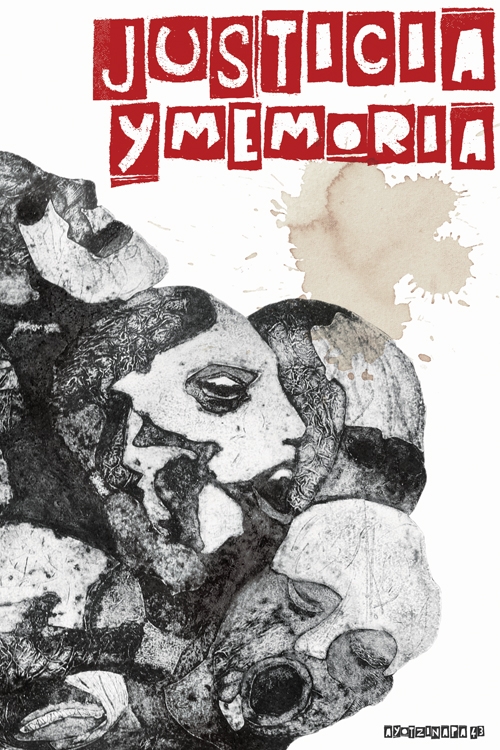
[Illustration 1. Sebastian Fund, Carteles por Ayotzinapa international poster competition in Oaxaca, Mexico, digital print, 60×90 cm]
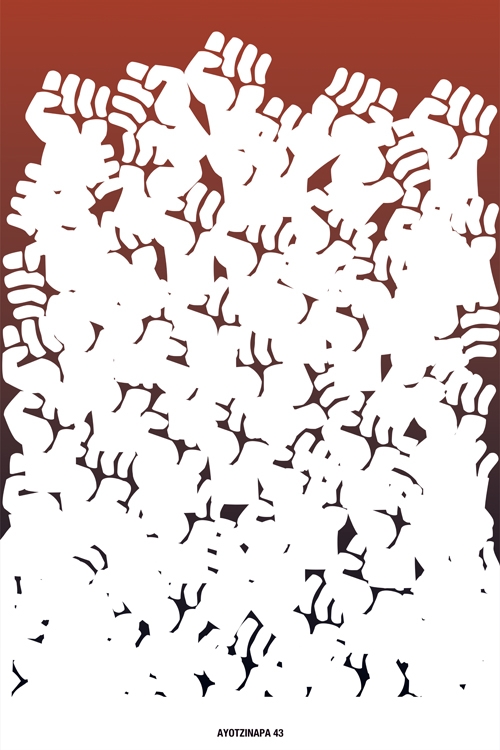
[Illustration 2. Amir Khademsharif, Carteles por Ayotzinapa international poster competition in Oaxaca, Mexico, digital print, 60×90 cm]
The play on words “Just Art”[3] that the International Symposium on Contemporary Art Theory (SITAC) adopted as the title of its twelfth annual conference, assembled the participants in a somewhat unequal space of reflection. As justice and art have a connection that is intensified in moments of social confrontation and struggle, it is important to differentiate between the two bodies of concepts and notions in their totalities or nexuses. They do not correspond to the same sphere: whether a work of art is just is not a fundamental criteria for its circulation and is by no means an intrinsic demand of its function or definition. Paradoxically, at times art is summoned to speak of justice, and at other times art is brought to justice. Curiously, and by way of creating a primary estrangement in the copula of these two concepts, it is worth a review of the historical archive specific to art history to situate us in the perspective of what in the majority of cases—that is, when art is summoned to appear before justice (the law)—it is to be judged before a court for “obscenity,” for “corrupting the public morale” or for being “subversive and revolutionary.” Here I am thinking of emblematic and obvious cases such as: against Gustave Flaubert for Madame Bovary accused of obscenity in January of 1857; against Oscar Wilde, for immorality and indecency [homosexuality] in 1897; and again, symbolically against Oscar Wilde 18 years after his death, this time for perversion and decadence in the staging of Salomé by Maud Allan in 1918—the case of a second generalized campaign of vigilance over forms of sexuality that escaped the sphere of reproductive heteronormativity. These emblematic cases range from censorship, to the regulation of the space of sexual freedom to the construction of what is or is not allowed in the field of poetics and representation. A more contemporary Latin American example that comes to mind is the case against Alfredo Marquez, the Peruvian artist of the collective NN, who during the age of persecution of Senderismo in 1994, was detained, accused and sentenced for terrorism. I bring together these cases as they offer diverse examples of the possible normative and repressive attitude to the relationship between art and justice. In these specific examples of the confrontation between art and justice, what is at play is an operation via the negative. The juridical statute of art enters the crisis provided that it is constructed as a territory where minority forms of subjectivity occupy a space of definition that in legal terms allows the staging of the dimension in which art is a space destined to explore. From its condition of a state of exception within the bourgeois order, the possibility of opening the public discourse to the need for radical change in what is politically and socially allowed and not allowed. It is important to bring these historical examples to the discussion, albeit briefly, in part because they return us to concrete cases where justice is the space of juridical normativity that enters in a vigilant or repressive way to control the latent power of the transgression that art entails in its position as an outside to the norm of ideological and hegemonic order and the constitution (making) of subjects, but also to politics and the ordering of power.
In the limited space that this short paper allows, I am determined to advance a field of differentiation between the spheres of art and justice. The immediate problem that calls my attention is the uncritical assumption/adoption of art’s idealized role, in which it would appear that art were being summoned to do justice. What is the function of art in intensifying and amplifying the channels of order of a civic discourse and politics around an urgent and concrete social call for justice? The assembly of art and justice in a single phrase requires the critical understanding that this call should emphasize the transcendental dimension that the notion of justice implies, and of the historically limited and defined sphere as a field of action and transformation that art possesses as an institution of free expression and ideological critique. The mobilization of these concepts entails a differentiated accent or intensity. Returning to the concrete situation of this moment in México, the international discourse about the potential articulation[4] of these differentiated spheres calls us to meditate the ethical position of art in the face of the intensification of social violence and profound cultural transformation that the country is undergoing, and that could become a political change—a political change that we hope will transform the deep crevasses of injustice and violence into which the country falls; which threaten a full-blown confrontation between civil society and political power.
I cannot but think immediately of the necessity to discuss the highly urgent and concrete issue of demanding justice for the parents of the disappeared students of Ayotzinapa and the necessity to open a space of civic discussion about the absolute and radical demand to transform the dominant sphere of political order that has been destroying and diminishing civil rights in a spiral of unlimited violence. We are at the point of fracture of a political order and it necessarily shores us in a call to arms where art, in its dimension as a space of freedom and expression, could enter to supplement or aid cultural and subjective forms from which we imagine and construct a more just civic and political space. The common ground between art and justice, then, or what we properly consider “just art,” would need to play the role of mediator: an instrument that helps mediate the abyss of violence and the scandal that political power has imposed as the only horizon.
Once while abroad in the Palestinian territories, Jacques Derrida said that the notion of justice, as that of love, could not be deconstructed. These are notions or concepts that in their hard nuclei come from an outside that is absolutely and radically Other. In this sense, justice is a terminal of theological order, a call for intervention of the truth from a radical outside against the collapse of peace and social order. Art, on the other hand, has a function that corresponds to the process of secularization of the historical project of Modernity. Art can be or not be an instrument of struggle and resistance; it can help or not help a political project of emancipation. I am very concerned that often, and far too often, art is in fact an accomplice to power, the forces of the market, and violence. And in this debate, my intervention is to launch the question: How easy is it to assume immediately or transparently, that art is on the side of justice—or worse yet—that art in its political function is on the side of the vulnerable, marginalized, and exploited populations? Art is always a space of freedom, at times it is a space of critique and in this sense an actor in processes of emancipation, but also in many cases art is a space of privilege, and in this sense its connection with power and politics is complicated. This is especially true if the urgent demand is for justice and equality before the law.
Thus, other concepts and notions from outside the fields of art and justice are equally important and critical arms for the transformation of society and the cultural sphere. The space of education and the practice of everyday life can be understood here as necessary mediations between an absolute notions such as justice, and historically and socially defined dimensions such as art. If justice calls art to the podium, if the popular and civil assembly summons creativity, the imagination, and the profound liberating quality that aesthetics embodies in its historical formation, I think that art should respond. But how and from which positioning in a complex relationship where art is also an irresponsible space and often ideologically aligned with power and privilege?
We are in a moment in which the space of fracture of juridical order has entered a spiral of violence that can easily be defined as a state of exception, as a radical fracture in legal and political order. This conjuncture positions us before a call from within a radically Other sphere, to demand justice. To what degree can art function as mediator? To what extent is art a field that is relevant to educational or daily practices? Perhaps given its historical definition as a space of freedom and its critical character—its transgressive character—we could define it as a sort of state of exception to the dominant order and the cultural forms that reproduce normativity and the diverse ideologies of domination. But we should also be alert to the somewhat uneven dimension of the terms in their overlap. Art, in the consciousness of bourgeois modernity, is fundamentally tied up with justice in its definition as critique and negation. Art does not need to be defined as just or unjust; art’s space is juridically a space of transgression—and in its strongest cases a form of radical relationship with the truth. The civic function of art is progressive in that it expands the definition of freedom/liberty and intervenes by collapsing the difference between what is and what is not allowed.
The notion of state of exception is important here as it conceptually leads us to rethink the limits of the ordering of power and political violence. The state of exception is a juridico-political term that reminds us of military and police control, of civil war or war as the explicit content of the neoliberal capitalist order in its conquering of territories, markets, resources and populations; that is, the suppression and collapse of the social contract as such. The state of exception is the failure of the law precisely in its expressive correlation with justice as a transcendental concept. The situation of the historical moment that we are living is transformed into the social effervescence of a civil insurrection. Here art would seem to have a site of convergence[5] with justice. Considering the connections between the field of relevant discourse around this relationship, I think that the fracture of legal and social order, the systematic abuse of political power, the inequality of rights, and the inconceivable economic gap (that is another space of systematic violence) summons art to the political struggle. Remember that another way to conceive the notion of “state of exception” is as Revolution. Clearly here the genealogy that maps the production of theorizations on the notion of state of exception as an apparatus of analysis and critique returns us to Walter Benjamin and his description of the relationship between divine and mythical violence, and concretely to the relationship between power and violence.[6] The topics of this assembly merit a collective reflection, but also a critical discussion about the differentiated/distinguishable spaces of politics, art, and the call to justice as a fundamental right of equality and freedom. The concepts do not link up in a superficial way, rather they refer us to the fractures and gaps that allow us to find a collective imagination against the difficult and serious circumstances that the historical moment demands.
The specific topic of Just Art brings to the discussion another space of action that would seem absolutely fundamental to understanding the channels of action, mediation, and articulation between the political sphere and the sphere of aesthetics or art. Education as a fundamental right to freedom and equality is a privileged space of social and critical transformation. A pedagogy of liberation returns us immediately to a call that intersects the sphere of creativity with the sphere of critical thinking. Education is a fundamental right of democratic political order against injustice and violence. Education is a space constantly threatened by economic and political violence, through the normalization of state of exception defined as war, police state or militarization of society that affects daily life and the exercise of freedom that we associate with education as a space of growth and development. Similarly, the juridical fracture that unleashes the confrontation of social actors with the demand for justice, in the specific case of Ayotzinapa, reminds us of the political character of education as a democratic right and a space of transformation and social critique. The recognition of art’s relevance to these spheres is necessary and important. Nonetheless we ought to maintain a critical distance as to what degree art can pass for an agent of transformation, or to what degree its function is transparently and directly connected with the state of exception in its complicity with power. I suppose that we could understand it in its ethical and emancipatory role, but only if we redefine and push art in its inflection as an immanent field of transformation of the order of imagination, subjectivity, critique, and truth and live it as a space of expression of freedom.
Mariana Botey is Latin American Art Historian, Theorist, Critic, and Associate Professor at the University of California, San Diego’s Department of Visual Arts.
Sara Solaimani is a PhD student in Art History, Theory and Criticism at the University of California, San Diego.
SITAC XII’s Just Art/Arte Justamente proceedings were directed by Carin Kuoni and took place at the Teatro Julio Castillo in the Centro Cultural del Bosque in Mexico City, January 22-24, 2015.
Notes
[1] Giorgio Agamben’s State of Exception: Article 14 of the Charte of 1814 granted the sovereign the power to “make the regulations and ordinances necessary for the execution of the laws and the security of the State.” Agamben, Giorgio. State of Exception. Translated by Kevin Attel. Chicago and London: University of Chicago Press, 2005: 11
[2] Botey, Mariana. Zonas de Disturbio: Espectros del Mexico Indigena en la Modernidad/Zones of Disturbance: Specters of Indigenous Mexico in Modernity. Mexico City: Siglo Veintiuno (UNAM), 2014:135.
[3] As in both art that is just and only art.
[4] Translator’s note: Botey’s term articulación carries a double meaning of lingual articulation and as a juncture, meeting point, or hinge, making the literal translation “Here art would seem to have a place of articulation with justice.” Although in American Academic English articulation is recognized as the act of jointing, in this definition it more commonly means written or verbal expression, or a joint of the skeleton. In English, articulation experiences a lingual disjuncture. It means two separate unrelated things, scientifically and linguistically, and therefor is rendered a neutral and sterile term. In Spanish, the articulation between art and justice signifies where the two worlds meet and are expressed through one another in an active jointing.
[5] See Translator’s Note above.
[6] Giorgio Agamben in his essay “State of Exception,” analytically isolates and traces the relationship of the political concept of “state of exception” in Carl Schmitt vis-à-vis Benjamin’s formulation. In the case of the Marxist philosopher we are before a figure of Revolution in its sense as potentiality that is radically outside of time (an eschatology) and political order (nomos). For Schmitt, and in response to Benjamin, the question is that of suppressing the divine character of violence to suspend the law and be able to access a form of power (sovereignty) outside of the legal framework, that is, as a beginning of the order of dictatorship, authoritarianism, and militarization—a fascist conceptualization of power.

